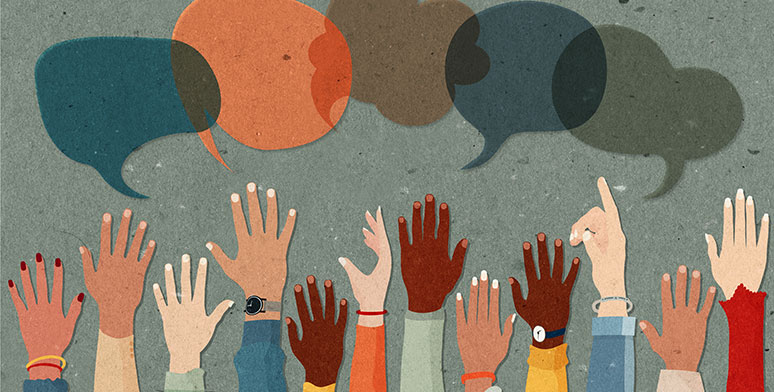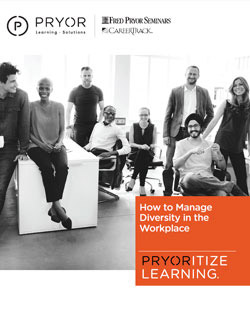Building a Positive Work Environment: A DEI Perspective

Creating a positive work environment within the framework of Diversity, Equity, Inclusion and Accessibility (DEIA) or DEIB (Belonging) requires a broad approach that addresses different aspects of organizational culture, policies and practices. It starts with creating a sense of belonging.
Creating a Sense of Belonging
A sense of belonging refers to the feeling of being accepted, valued and included within a group, community, or organization, regardless of one’s background, identity or characteristics. It encompasses the feeling of being welcomed, respected, and supported for who you are. It also includes feeling like you have a meaningful and equal stake in the organization.
Here are some key aspects of a sense of belonging within the DEIB framework:
- Vision and Mission Alignment: People feel like they belong in an organization when they support and are working towards a shared vision and mission with others. An organization’s mission is a valuable tool in bringing diverse people together and focusing their work, because even where there are different views, we all know we are working towards the same shared future.
- Inclusivity: A sense of belonging is fostered when individuals feel that they are part of a community or organization that actively embraces and celebrates diversity. Inclusive environments recognize and value the unique perspectives, experiences, and contributions of all members, regardless of differences in race, ethnicity, gender, sexual orientation, disability, age, religion or socioeconomic status.
- Respect and Validation: Individuals experience a sense of belonging when they feel respected, validated and affirmed for who they are. This involves creating an environment where people appreciate and celebrate each other. Respectful communication, positive reinforcement and fair and transparent recognition contribute to a sense of belonging.
- Support and Empowerment: A sense of belonging is reinforced when individuals feel supported and empowered to be themselves and pursue their goals and aspirations within the community or organization. This includes providing access to resources, developmental opportunities and mentorship to help individuals overcome barriers and achieve their full potential.
- Connection and Community: A sense of belonging is strengthened through connections and relationships with others who share similar values, experiences and identities. This may be done by establishing affinity groups, and conducting open social events that allow people across the organization to connect and network.
- Safety and Trust: Individuals need to feel psychologically and physically safe within the community or organization to develop a sense of belonging. Supervisory training is essential for making sure that those in positions of power can establish and maintain trust with many different people over time.
These are workplace elements that benefit everyone in the organization – regardless of their sources of diversity. This is not ignoring difference – it is inviting people to come together to share the power of those differences with each other.
Establishing a Mission-Focused, Positive Work Environment
DEI initiatives and programs are important for identifying and addressing sources of bias and system challenges in the workplace. These support a positive work environment but must complement a full organization development approach that touches all facets of the organization. Here are steps you can take to establish a positive work environment:
- Leadership: Leaders and managers play a crucial role in setting a strategic plan, ensuring mission accountability and encouraging employee engagement. Top-level commitment to developing a positive work environment – including encouraging DEI – is essential for driving meaningful change throughout the organization. Leaders should actively communicate their commitment to engagement and belonging, allocate resources to employee development and hold themselves and others accountable for progress.
- Clear Policies and Practices: Clear governance sets a foundation where all know the rules and opportunities, and all can advance regardless of socioeconomic status. Clear policies and practices should include non-discrimination policies, inclusive hiring and promotion practices, accommodations for employees with disabilities, developmental and engagement opportunities and ensuring equitable access to resources for all employees.
- Diverse Representation: A positive work environment that also fosters a sense of belonging has diverse representation at all levels of the organization, including marginalized groups. This means actively recruiting and retaining employees from diverse backgrounds in leadership positions, decision-making bodies and project teams. Diverse representation ensures that different perspectives are valued and incorporated into business processes.
- Inclusive Communication: Leaders at all levels should foster open and inclusive communication channels where employees feel comfortable expressing their proposals and feedback. This may require organization-wide training on dialogue, feedback, active listening and organizational culture.
- Training and Education: Provide training and education programs for all employees to increase awareness, understanding and competency in issues related to diversity, equity, inclusion and accessibility. Training should address topics such as unconscious bias, cultural competency, and inclusive leadership.
- Employee Interest and Engagement Groups: Support the establishment of employee resource groups (ERGs) or affinity groups that provide a space for employees to connect and share experiences. ERGs can encourage inclusivity, foster a sense of belonging and drive positive change within the organization.
- Accountability and Measurement: Establish mechanisms for accountability and measurement to track progress on different mission-related activities, including DEIA. This may include setting goals, conducting regular assessments and surveys to evaluate employee experiences, and making adjustments based on feedback.
These elements are vital to create a positive work environment where all employees feel valued, respected, and empowered to advance the mission, regardless of their background or identity.
Everyday Actions to Support DEI
There are many practical and tangible steps that managers and team members can take every day to support each other in the workplace. Instead of thinking of DEI as something separate from mission delivery, reframe diversity and inclusion first as key mission drivers. High performance and effective mission delivery depend on many different people bringing different experiences to help each other meet the needs of clients and customers and other stakeholders. Let’s look at concrete steps you can take to do this work:
- In meetings, send out agendas or topic areas in advance and invite participation from those present. Monitor to make sure a range of perspectives are included.
- Allow some conflict – diverse teams bring different experiences and different perspectives – fostering a sense of belonging doesn’t mean everyone is aligned all the time. It means people can actively engage without fear – talk it through – and then agree to a path forward.
- Time is precious – but not allocating enough time to other people leads to a decreased sense of belonging, and decreased engagement. Set aside enough time to listen to other people, so you can try to detect both what is spoken and what is not. Pull the thread on underlying assumptions and alternative approaches.
- Talking with someone new can help reveal blind spots that you and your group may have developed over time. If your organization can support it, get out and visit a customer or production or service site you have not seen before.
- Practice empathy with both in-person and telework/virtual workers. People have good and bad days. Online workers may have the camera on or off; in-person employees may signal the need to be alone. Check in with people if you think something is wrong – and respect boundaries if someone needs some space. Don’t forget to check back in with them later.
- At times, stay in the present and focus on the future – past systemic barriers and inequities are real and need to be acknowledged but can also lead to resentments when the past can’t just be erased or if change takes time. It is equally important to take time to reflect on the past – to consider what factors, assumptions and choices led to the current state, and could be changed for a better future.
Next Steps: Building Belonging, Empowerment, and Engagement
Truly integrating DEI at work requires staying aware of and attentive to many sources of difference – this means taking the time to network and get to know people’s backgrounds and values. Training is an important way to develop the skills to this effectively – both for individuals and teams.
Pryor Learning offers more than 30 learning tools on Diversity and Inclusion topics, with real-time practical tips. Examples of public or on-site workshops include Diversity, Equity and Inclusion in the Workplace; the training Understanding and Developing Cultural Diversity; and the seminar How to Manage Diversity in the Workplace.
In addition to a range of courses on Diversity, Equity, and Inclusion, Pryor offers courses like Developing Emotional Intelligence and Communicating with Tact and Professionalism to continue building your listening and communications skills. We also have a full video series on communication, conflict management and active listening. Despite the complexities of diversity in the workplace, basic self-awareness and interpersonal skills can go a long way towards helping others feel heard and valued.
Pryor’s seminars on Strategic Thinking and Planning and Strategic Goal-Setting can be applied in your planning work to integrate Diversity and Inclusion within the broader organization, helping to make both the business case and personal case for change.



